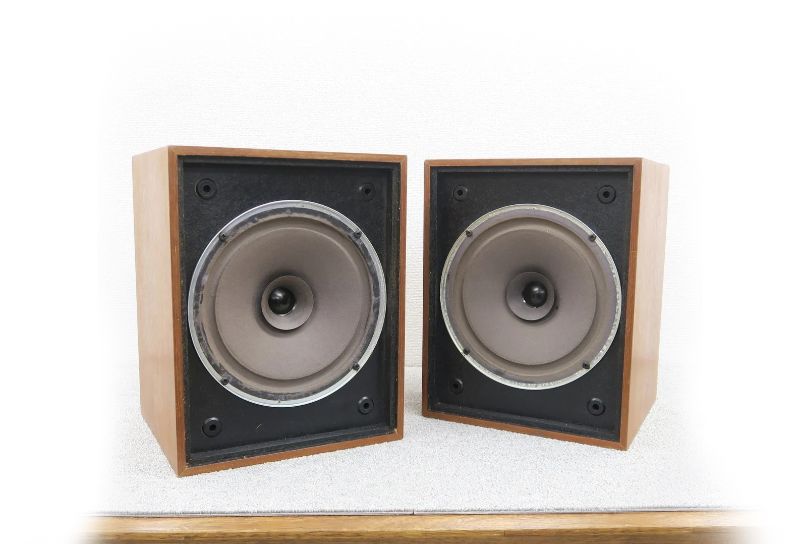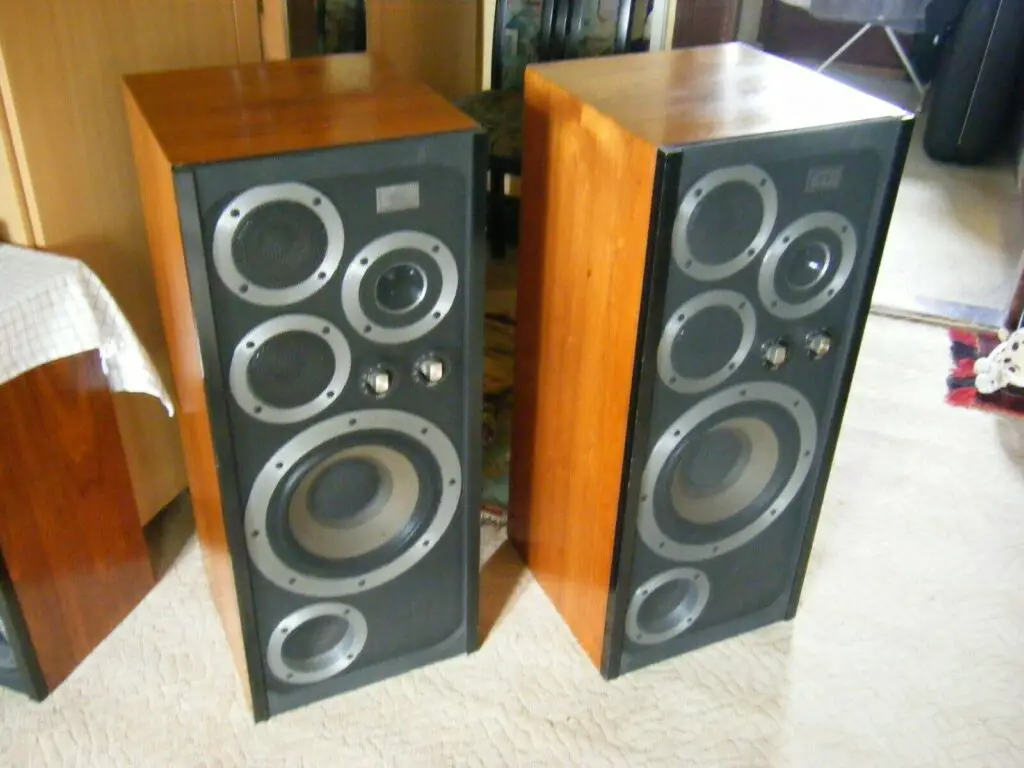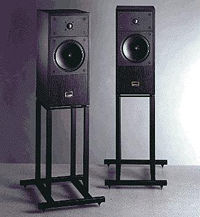Bowers & Wilkins has established itself as one of the most innovative loudspeaker manufacturers in the United Kingdom since its founding in 1966. It quickly became known for technologically fascinating products that pushed the boundaries of design. With the introduction of the DM70 in 1970, this became clear. It contained two cabinets per speaker, one for the bass and the other for the midband and treble, among other innovative concepts. The former was a curved, 11-segment electrostatic panel, while the latter was an infinite baffle-loaded 300mm woofer. This established a high bar for the 1979 801 – the company’s most important flagship during its early years.
When it was released at the end of the 1970s, it was hailed as the company’s best cost-no-object product yet, designed with “no constraints” on the design team aside from the requirement that it be a full-range, wide-bandwidth transducer with very low distortion. It received acclaim from the hi-fi press around the world, and Abbey Road Studios quickly adopted it as their classical music monitor of choice. The legend of the B&W 800 series was born, but the business had to figure out how to take the franchise downmarket.
The 802 was the solution; the 801 was simply too large for many British listening rooms, therefore the 802 had to be smaller and more suitable for residential living rooms. As a result, the business came up with something that now seems completely ordinary and uninteresting, but was revolutionary by the standards of speakers of the 1970s. It created a towering floorstander (1040x300x370mm) with a footprint that was less than half that of the 801. The 802 was exceptionally slim by today’s standards, as opposed to the large, wide baffle boxes that were the norm at the time. This paved the way for the so-called “tower” floorstanders that are still in use today.
From innovative materials technology to the use of computer modelling for various components of the loudspeaker cabinets and crossovers, the original 802 Series 80 had a plethora of creative, forward-thinking design details. Its drive unit lineup comprised of a single 26mm B&W TS26S tweeter above the MK100/802 midrange driver, which was also housed in its own compartment. Two 220/802 polymer bass drivers, rubber mounted and insulated from the main cabinet box, functioned in parallel.
The latter was constructed of high-density particleboard that was tightly reinforced on the inside and veneered on both sides. 6mm anti-resonance bituminous pads were used to laminate it. The crossover, a sophisticated device with APOC (audio powered overload circuit) electronic protection – complete with an LED indicator to show if it had been tripped – situated at the bottom of the 802. B&W made a big deal out of it at the time, claiming to be the first company in the world to do so. APOC protected against DC, thermal, and transient overload signals by detecting the voltage provided to each individual drive unit. If anything came in contact with the driver that had the potential to blow it, the crossover would temporarily dampen it. The maximum power output was stated to be 600W, with a 90dB efficiency.
The 802 was a preview of things to come at the time of its release. The hi-fi market was emerging from the 1970s, when most loudspeakers were heavily colored in one way or another, owing to poor cabinet construction and/or hefty, overdamped drive unit materials. The new 802 has a significantly tighter and tauter sound than many of its competitors, as well as a clear, spry midband with plenty of detail and a crisp, extended treble. This 32kg giant required precise positioning, but its sealed cabinet allowed it to approach boundary barriers closer than reflex-loaded competitors. In a nod to the vintage DM70, the upper drive units may also be turned slightly towards the listener, removing the need for the entire cabinet enclosure.
Because the 801’s huge diameter bass driver was gone, the 802 couldn’t match its bigger brother’s bass extension; it rolled off 10Hz higher, although this wasn’t an issue for most types of music. By the standards of moving coil box loudspeakers of the time, the 802 Series 80 imaged very well, and it also tracked dynamics quite well, with very little compression at high settings. The early 802 was a strong, punchy, and engaging performer with great elegance under duress, a relatively smooth tone balance, and a lot of fine detail.
Unfortunately, the Series 80’s original design proved to be troublesome. Because the wooden midrange enclosure tended to break with age, B&W designed a more durable and better damped head enclosure with a glass reinforced concrete inner lining – termed Fibrecrete – and a robust polystyrene outer shell. The 802F appears to have this change, which the firm claimed reduced cabinet vibration by 60 decibels. Then came the 802F Special, which had a new polyamide dome tweeter and B&W’s Environmental Controls, which allowed for a 1.5dB high frequency lift or cut at 5kHz, as well as a choice of 1.5dB or 2.5dB midband attenuation from 1 to 3kHz. The 802F Special is the most desirable of the early 802 loudspeakers.
This rushed update to the 802 was the first in a long succession of revisions to the speaker, all the way up to today’s 802 D3 – which, aside from size and general purpose, is a completely different beast. The brilliant thing was that B&W maintained developing the design in order to stay ahead of the competition – or at least keep up with its commercial competitors. The 802 was praised by many for its sheer toughness and wide range of capabilities; not everyone desired a delicate, finicky loudspeaker at this price. At debut, the early 802 cost around two thousand pounds, so it was never a cheap pleasure. Many others thought it was still good value for money back then, as it is now.
Throughout its lengthy life, the 802 has been updated on a regular basis, with several new variations. The B&W 802 Matrix, released in 1986, was the most significant early development. Laurence Dickie, the designer, introduced an internal grid-like architecture that resulted in a significantly quieter and more rigid cabinet. The speakers featured metal-dome tweeters, Kevlar midrange drivers, new woofers, and bass reflex loading. The Matrix 802 S2 appeared two years later, followed by the Series 3 a year later.
The Nautilus 802 was a radical departure, with cabinetry based on the Nautilus from 1993 and a midrange driver from B&W called the Fixed Suspension Transducer (FST). More stronger motors with neodymium magnets were employed here, along with twin 200mm Kevlar coned woofers and B&W’s dimpled Flowport bass reflex port. The crossing was also made easier. “B&W has succeeded in condensing the remarkable technology of its Nautilus 801 into a loudspeaker system of the greatest quality, but at a lower price and smaller size,” the Europe-wide judging panel said of this speaker, which received EISA’s European High End Audio of the Year 1999-2000.
The Diamond 802D, released in 2005, featured a new treble unit diaphragm covered in diamond particles via chemical vapor deposition, as well as improved FST midrange drivers and carbon fiber/Rohacell woofers. The new dome was a significant upgrade over the prior metal dome, with superior subtlety and speed.
Expect to pay somewhere between £500 and £5,500 for a pair of old 802s, depending on whether they’re the original standard or the later Diamond 802. Generally speaking, £2,000 will get you a very fine pair of Matrix 802s that can offer superb sound at extremely high volumes. Because of the vast number of units sold, this speaker isn’t difficult to come by, and there are some good deals to be acquired.







